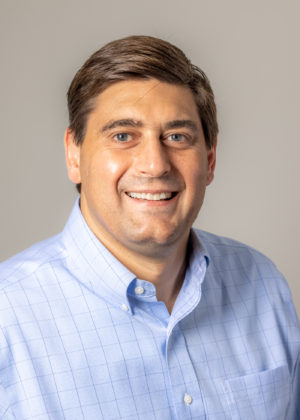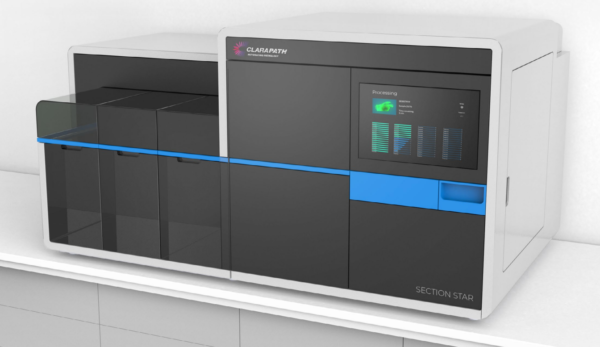Although you have likely used their services throughout your life either directly or indirectly, you may have never heard of histotechnicians or histotechnologists, who prepare tissue specimens for examination by clinicians, surgeons or researchers. Their work allows biopsied tissue processed in pathology laboratories to be identified, whether it be a tumor, an abnormality or healthy tissue.

Just as demand for many health care careers is increasing, though, so is the demand for histotechnology experts. According to an article published by the National Society for Histotechnology”™s blog, shortages in the industry have reached a critical status, driven largely by an aging workforce and increase in retirement rates, along with a declining number of clinical education programs. The education issue has been reinforced by the Covid-19 pandemic, wherein students have had more difficulty accessing clinical rounds. As a result of all of this, there are not enough qualified individuals to fill current vacancies.
A Westchester medical technology and robotics company, Clarapath, is hoping to address this problem, however, through their automated laboratory tools. The SectionStar, Clarapath”™s device, is a machine that mimics a human histotechnician.
Originally, Clarapath was conceived as a spinoff of Dr. Partha Mitra”™s research at Cold Spring Harbor Labs, a biomedical research and education facility located in Long Isand. Mitra”™s research concerned neuroanatomy, and thus necessitated brain tissue samples, numbering in the hundreds of thousands. His lab used a manual histopathological method called the “tape-transfer method,” in which brain tissue is cut into micrometer-thin sections, transferred to a piece of tape, and then transported to glass slides for examination.
According to Clarapath”™s president and CEO Eric Feinstein, this process, called microtomy, is the only step in tissue processing that has not yet been automated. Seeing this need, Mitra, who remains with Clarapath as a member of its board of directors, was inspired to create a fully automated microtomy system, which we know now as the SectionStar. The SectionStar makes the process scalable, mitigating delays and costs, and allows for more precise results.
Feinstein said the tape-transfer method, the unique way of cutting the tissue and putting it back together, was the genesis of Clarapath.
“There was a very pragmatic sort of problem, which is that we don’t have enough people to cut the tissue. What do we do?” Feinstein said. “So let’s create a machine to automate it. Little did the original founder and everyone else know at the time that there was a severe labor shortage. A lot’s changed from then (2014) to now. Back then, the average age of a histotechnician was probably about 50 years old ”¦ Today the average age of the workforce is 59. Then Covid hit, and you”™ve heard and read in the news that clinicians are overworked, and people are exhausted. COVID has just put a serious dent in things, and people are now exiting the workforce at a much higher rate.


“So you have no one actually filling the funnel of talent while people are leaving, and you’ve got an increase in demand for testing. We have a fundamental problem where the demand for tests is going up and we have a supply of talent going down. So if you don’t have enough people to, again, process tissue, you’ve got a really big problem ”” it’s a public health problem.”
Clarapath”™s automation and cutting-edge robotics have the potential to transform the industry. Histotechnical processes have always required human expertise and control, but the company”™s technology has been through roughly eight years of development to mimic all the necessary skills of the human hand, eyes and brain in the process, packaging nine steps into one device. Automation also reduces the risk of mistakes in medical procedures like biopsies that rely on these processes.
The technology is not just for clinical markets, for patients of hospitals, clinics and medical centers, but also for nonclinical settings in which cell and tissue samples are necessary, like drug and toxicology development, pharmaceutical firms and contract research organizations.
The SectionStar device is currently being finalized and has undergone several pilot programs in clinical settings like Northwell Health, but has no official customers yet. Its Series B round of funding brought in $16 million, from sources like The 4100 Group, East Post Road Ventures (the investment arm of White Plains Hospital), Epiphron Capital, Northwell Ventures, P5 Health Ventures and other organizations. That most recent funding round brings Clarapath”™s total raised to $39 million.
According to Feinstein, the new funding will be used to support Clarapath as it plans to expand rapidly, in terms of products and services, mergers and acquisitions, workforce and even physical space. The company plans to expand its corporate headquarters presence on Skyline Drive in Hawthorne by building out a new facility for on-site integration and fabrication.
Feinstein also said that the company”™s location in Westchester allows it to sit at the cross section of multiple industry hot spots ”” precision manufacturing in upstate New York, Connecticut and Western Massachusetts, pharmaceutical firms in New Jersey and technology and software in Manhattan.
“So we kind of blend in here ”¦ We bring all of those disciplines together. Most organizations don’t have all of them under one roof, particularly at a company of this size. We also bring all of the pharma companies and customers as well as clinical customers. So with Northwell and White Plains Hospital, and New York Medical College, we happen to be sitting in a lot of clinical sites. It’s bringing all of that together under one roof. The labor force, and the ecosystem around it, is very important. And obviously people are the most important asset ”” it’s impossible if we didn’t have a very, very robust workforce.”
Feinstein is confident that the technology will reach across both clinical and nonclinical settings to meet a long-overdue need.
“This is the entire premise of what we’re doing here ”” to provide a new standard in laboratories ”¦ to become ubiquitous in every hospital laboratory, as well as research and pharmaceutical,” he said. “You’d hope that there’s something better than what exists ”” that’s the frightening thing here. To most people, you know, pathology and laboratory medicine is like a redheaded stepchild that no one wants to talk to. It”™s sitting in the basement of a hospital, it”™s in the dungeon. It doesn’t matter where you go. There are always capital constraints and yet, it is the crux of practicing medicine. And you would think that all of these things are fully automated, with no issues. The reality is that this particular area of pathology, and this is not an exaggeration, hasn’t changed in over a hundred years.”



















